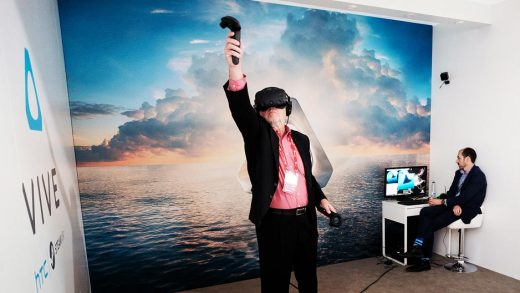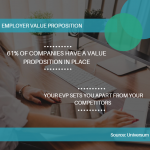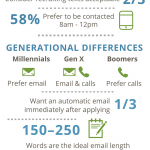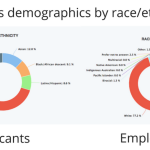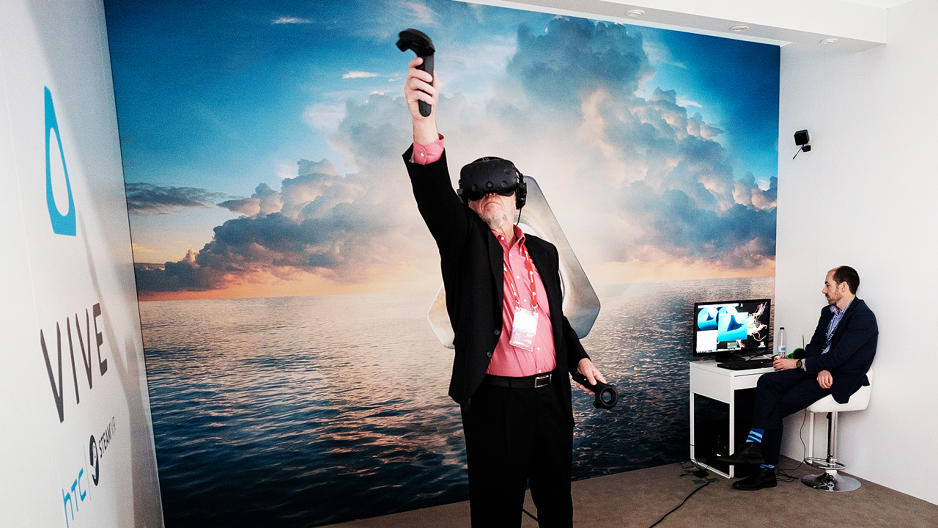I Invest In VR Companies–Here’s How To Get Hired By One
It’s impossible to walk 10 feet in Silicon Valley and not run into a VR/AR enthusiast. The space still seemed pretty “fringe” when I first started getting into it five years ago, but it’s since exploded. With the upcoming launch of Playstation VR, Oculus Touch controllers, cheaper VR-compatible PCs, and Google Daydream, VR promises to bring immersive entertainment, communication, and education tools to more people than ever before.
To do that, though, the fast-growing sector needs talent. And since it’s accelerating faster than universities can add VR/AR coursework, most of the industry’s newcomers come in from other fields—not just professionally but geographically, too. VR’s global hub is Silicon Valley at the moment, but centers of VR development are popping up rapidly in China, Japan, Switzerland, the U.K., Turkey, and France. Here’s how to find a job in one of them, whether you’re an experienced techie or not.
Study Up
If you’re new to the VR scene, one good place to start is to check out UploadVR (where in full disclosure I’m an advisor) for an industry primer. It originally started as a news site for all things VR, but quickly evolved to become much more. The Upload Collective in San Francisco (and soon to be in L.A. and other locations globally) is a community and expertise hub for all things VR and AR. The group hosts informal networking happy hours as well as educational workshops on how to build in VR and raise money for a VR startup. There are also classes on developer programs at Oculus or HTC.
Headset manufacturer HTC Vive also has various programs that provide investment capital, VR equipment, developer support, and office space as part of its Vive X incubator program. Vive invests between $50,000 and $350,000 per “incubee,” and the program lasts four months. Vive X has beautiful offices and “hangout” space in San Francisco, and it’s setting up similar centers in China and Taipei. The organization hosts regular events and outreach efforts for developers and VR entrepreneurs, which are great for getting acquainted with the VR developer community.
Other events to attend (or volunteer at) include SVVR in Silicon Valley and VRLA in Los Angeles. One the West Coast, GDC is a conference for game developers interested in VR, and there’s also VRX, the VentureBeat-hosted GamesBeat, VR on the Lot, and of course Siggraph, the leading visual effects and design conference. There are many other events, too, but these are the ones I found most helpful as a newcomer.
There are plenty of other resources available, too: Road to VR, GreenLight‘s VR reports, The VR Fund’s industry landscape map, CB Insights’s VR report, Tracxn’s VR/AR reports, and then just the general tech press (TechCrunch, VentureBeat, Recode, and of course Fast Company), which all cover the VR industry.
It’s also useful to follow some of the industry’s leaders on Twitter. Friends and co-investors of mine—including Tipatat Chennavasin, Greg Castle, Gavin Teo, and Amitt Mahajan—follow the space closely, so you should also check out their social media feeds for up-to-date comments, blog posts, and curated industry news.
Training
Say you’ve done your homework and read all the content that’s out there. Now you’re ready to level up. Fortunately, there are some formal training options for VR professionals beginning to emerge.
At OC3 (the Oculus Connect 3 conference), Oculus announced it would roll out a series of training and educational programs to help developers better understand the platform. Online education platform Udacity will soon offer a six-month “nanodegree” in VR, in partnership with Google Daydream, Unity, and HTC Vive. Then there’s the UploadVR Academy, which is a more condensed curriculum offered over eight weeks.
Getting Into Gaming
The VR industry is ripe for those with gaming industry experience. Having invested in several gaming companies in the past, my partners and I are often asked about VR game development by friends and colleagues working for mobile, PC, or console game publishers.
All major VR headsets are pushing games first and foremost—above all other forms of content. Oculus announced it’s invested $250 million in content for its platforms, presumably with much of it earmarked for game developers. Game studios like Playful in Austin and Insomniac Games (in Burbank, CD and Durham, NC) are hiring talented designers and developers looking to break into VR.
Animators and 3D modelers from the gaming and visual effects worlds are likewise in high demand by VR/AR companies. Getting some experience working with the VR/AR toolsets Unity and Unreal can be really useful, and not just for game development. Unity’s big, recent round of funding was largely predicated on the belief that Unity would become the virtual world itself—or in other words, to borrow an analogy from Hollywood, the base layer of the “Matrix.”
VR Opportunities For Designers
The new medium needs an influx of UI/UX designers to help optimize the VR/AR interface and experience for the first time. No flow or design template has yet been defined as the industry standard. In the meantime, designers I’ve spoken to have really been able to let their creativity run wild in defining new interaction archetypes.
For instance, bringing a user’s hands into VR through the Oculus Touch controllers ushers in a new category of input gestures and controls—not to mention a whole host of design challenges. Understanding input and interaction spaces for room-scale VR vs. static or 360 video will also be fruitful fodder for UI/X folks to explore.
Artificial Intelligence And Computer Vision
One longer-term area that’s on track to grow is the intersection between artificial intelligence (AI) and AR/VR—giving “bodies to bots” and populating VR and AR worlds with sentient holograms. People with machine (and deep) learning experience are in high demand right now. So are computer-vision experts who can better inform virtual world characters, not to mention help flesh-and-blood users make better sense of the world around us as we’re immersed.
What’s more, these skill sets will apply to more industries than just AR and VR in the years ahead. For example, as an early investor in Cruise Automation, we saw the impact that computer vision had on autonomous vehicles, with cameras recognizing road markings and street signs more accurately over time. If you’re a talented computer-vision engineer, you have a lot of exciting job opportunities ahead of you in this space.
Big Tech
If you’re looking to join a major VR platform company, then “Big Tech” is worth considering, too. Check out the job openings at Microsoft HoloLens, Facebook social VR (or Oculus for Rift careers specifically), and Google Daydream.
Most open positions are in engineering right now, but there are opportunities in legal, UI/UX, marketing, and business development too, even though they’re fewer in number. In legal, for example, imagine all the questions that arise today around privacy and property rights: if Niantic Labs and a future version of Pokémon Go inspires gamers to trespass on physical property while going after a Charmander, is Niantic Labs liable? Or if a graffiti artist tags an augmented-reality digital overlay on your company’s building, can he face charges for defacing private property?
For business development roles, opportunities might involve licensing intellectual property in VR environments, or signing corporate customers to develop VR/AR applications for their businesses. In marketing, could you run the launch campaign for a new piece of VR hardware or plan for a new game or VR film. These are just a few examples of how broad the job opportunities go within VR right now—it really isn’t just for engineers.
At a big tech company, your role may be more regimented than at a smaller one, but you’ll have access to tremendous resources and may have better job security than at an early-stage VR startup.
Just Don’t Wait To Get Involved
Because it’s still young and changing and expanding so quickly, the VR/AR world really functions like a community—arguably more so than most other tech sectors. So you may find it’s unusually welcoming. That’s true despite it being so distributed; years ago, just as you didn’t have to be in Cupertino or Mountain View to become a mobile app developer, you’re no longer obliged to be in Silicon Valley to snag a great job in VR. In fact, Oculus and HTC content development grants aren’t restricted to American creators, and international studios like Owlchemy Labs (Austin, Texas) and CCP Games (Reykjavik, Iceland) have created amazing VR titles with Oculus grant support.
Finally, a word to hiring managers and investors, without whom there’d be no hiring spree in the first place: post your job listings where newcomers to the field will be most likely to find them—on SVVR, UploadVR, AngelList, and even in relevant forums on Reddit. And for investors, there aren’t yet established channels for “dealflow” in the space, so investing in the nascent community is important —in other words, it’s my job to invest in great entrepreneurs looking to refashion existing industries within this new computing revolution. If you’re one of them, get in touch!
Sunny Dhillon is a founder and partner at Signia Venture Partners, an early-stage fund in Menlo Park and San Francisco. In invest in VR/AR and consumer tech. Follow Sunny on Twitter at @SunDhillon and Snapchat at @sunnydhillon25.
Fast Company , Read Full Story
(42)

